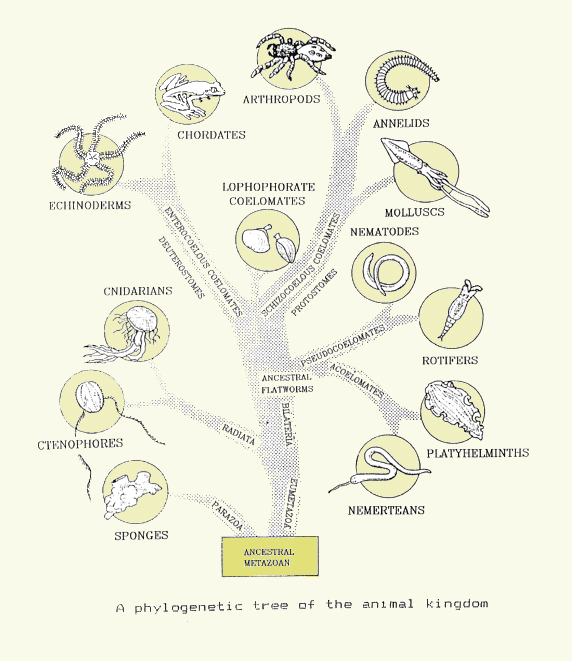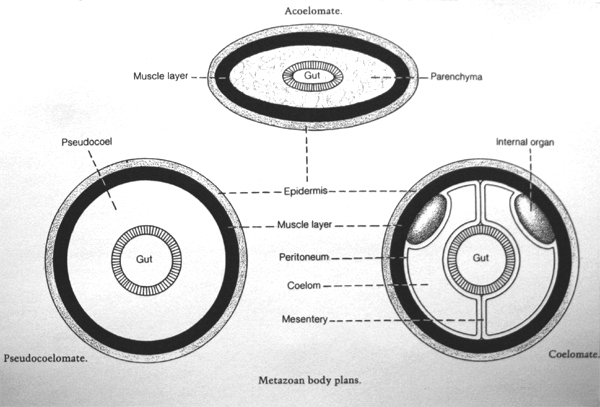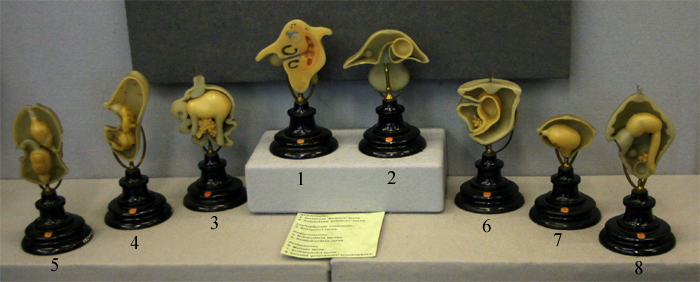
EVOLUTION OF THE MINOR PHYLA
A 'conventional' tree-of-life based on the nature of the body cavity or coelom shows how some of these animals are thought to be related to each other and to other invertebrate groups. Similarities and differences in larval forms may indicate the closeness of relationships between different phyla and have helped to place invertebrates, including members of the minor phyla, on the tree of life.

Formation of the coelom or body cavity
|
 |
Larval forms
Wax models illustrate the overall differences in larval forms of acoelomate and lophophorate coeleomates, deuterostomes (the invertebrate line, which gave rise to the vertebrates) and protostomes (the invertebrate line, which gave rise to the arthropods).
|
 |






